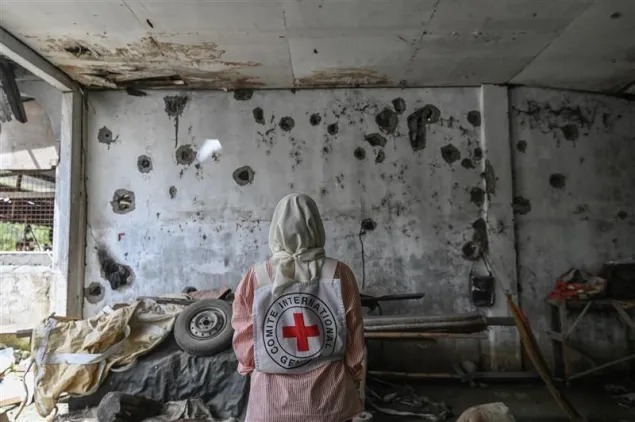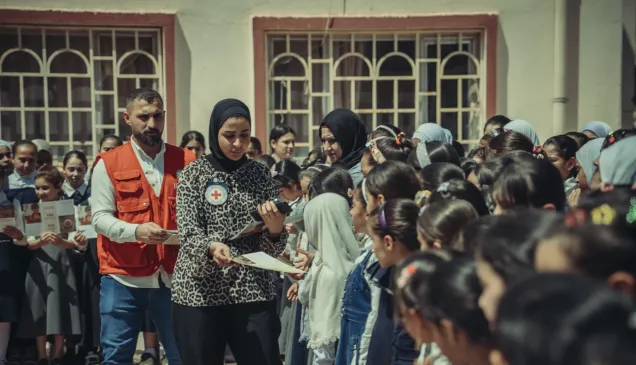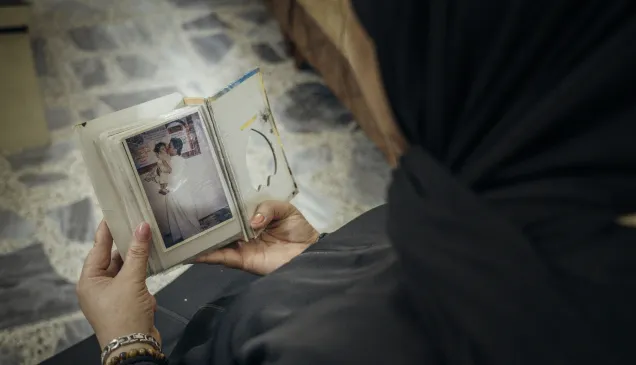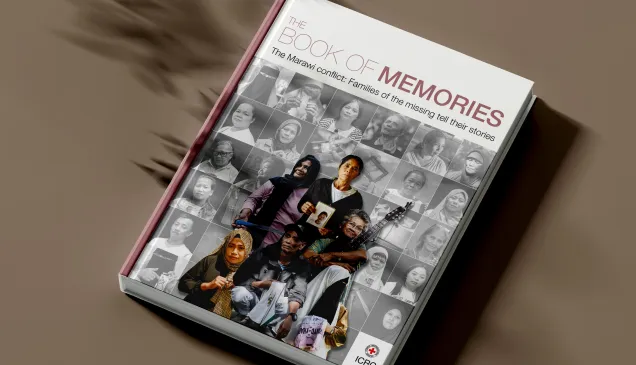Daily life in contested territories: How civilians navigate violence, risk and uncertainty

Photo: Reuters
At dawn, a farmer in Cameroon steps out of his doorway and pauses. He listens - not for birdsong, not for voices, but for a particular kind of silence. The kind that suggests, at least for the moment, that the armed groups who move unpredictably through his village have passed. The silence - or its absence - will help him decide whether to walk to his fields or turn back.
“We just don’t want to draw attention,” he told our team. For this farmer and so many like him, routine is not habit. It is protection.
Thousands of kilometres away, Sama in Mosul still avoids the window of her home. Years after the end of Islamic State group control in her neighbourhood, she feels a heaviness she calls “a scar inside”. She remembers women marrying young to avoid harassment, neighbours walking with their heads down, and the knock on the door that signalled it was time for her family to move as fighting intensified.
“We were always afraid of what would come next,” she said.
And in Mindanao, in the southern Philippines, a resident described a quieter but equally relentless pressure: “The fight is now in the stomach.” Even after the peace process in the Bangsamoro Autonomous Region, localised violence, clan rivalries and armed groups outside the peace agreement continue to disrupt daily life. For many, insecurity now blends with the struggle to secure food, livelihoods, and basic services.
These voices - and dozens like them - are the foundation of a new report by the International Committee of the Red Cross (ICRC), Navigating Violence: Learning from Civilian Experiences and Strengthening Humanitarian Action in Contested Territories. The report explores the lived reality of more than 204 million people who inhabit areas under the full or contested control of armed groups. Their stories reveal a world where authority is fluid, services fragile, and safety conditional.

An ICRC delegate looks at a bullet-ridden abandoned daycare in Madia, Datu Saudi Ampatuan, Maguindanao del Sur
What do we mean by “contested territory”?
“Contested territory” is a descriptive term used by the ICRC to capture environments where state authority is challenged by one or more non-state armed groups (NSAGs) within internationally recognised borders.
While these settings differ widely, they share defining features:
- overlapping or competing authorities
- shifting and unpredictable violence
- disrupted or politicised public services
- restricted movement and confusing rules
- heightened suspicion and fear of being misidentified
- disrupted local economies
- deep social and political grievances that shape vulnerability
Across the globe, 383 armed groups are of humanitarian concern to the ICRC; 63% fully control or contest territory, and around 85% attempt to provide some level of governance - from basic services to security enforcement.
These are not marginal spaces. They are home to millions of families who now need to navigate daily choices with caution, ingenuity, and often profound uncertainty.
Daily Life: How people experience contested areas
Although the dynamics of contestation vary, the human experience shares common threads across Cameroon, Iraq, and the Philippines. People describe a life shaped less by the headlines of conflict and more by the minutiae of everyday decisions - where to walk, whom to greet, which route to take, when to leave the house.
Four themes emerge from the report’s research:
1. Governance shapes risk
Whether through strict control, disruptive influence, or fragmented authority, governance affects nearly every aspect of life. In Iraq, the Islamic State group imposed a rigid system that touched everything from public services to personal behaviour. In Cameroon, armed groups enforce civil disobedience, curfews, and school closures. In Mindanao, governance is split between formal authorities and groups outside the peace process.
For civilians, these competing systems mean one thing: uncertainty.
2. Violence is strategic and ever-shifting
People our teams spoke to in communities described villages turning into battlegrounds without warning, checkpoints multiplying overnight, or targeted violence rising long after major clashes ended. The fear of being misidentified - as an informer, a sympathizer, or an enemy - often weighs as heavily as the violence itself.
3. Services become political
Education, healthcare, documentation, and livelihoods all become intertwined with the conflict. When public schools close, families need to pay for private education or remove their children from school. Health workers face threats from multiple sides. Without civil documentation, people cannot move safely or access services. Markets shrink, prices rise, and access to land or income becomes precarious.
These obstacles compound over time, leaving long-lasting social and economic scars.
4. Identity shapes exposure
Ethnic, religious, or clan identity influences what risks people face, who they trust, and whether they are perceived as aligned with one actor or another. In such environments, social cohesion - a vital source of protection - becomes strained or collapses.
How people cope: Strategies born of necessity
Despite these challenges, people are not passive. The report documents four common self-protection strategies:
- Routinization: Keeping predictable schedules and avoiding unnecessary movement.
- Signalling non-alignment: Staying deliberately neutral to reduce suspicion.
- Partial displacement: Families split - some move for safety or opportunities, others stay to protect land or livelihoods.
- Collective action: Communities pool resources, negotiate with armed groups, or create informal early-warning systems.
These strategies reflect both resilience and the limits of what people can do alone.
Humanitarian challenges: Why reaching people is so difficult
Humanitarian organisations face significant obstacles in contested territories:
- insecurity and shifting frontlines
- state-imposed access restrictions
- counter-terrorism legislation that complicates contact with armed groups
- sanctions that hinder banking, procurement, and logistics
- mistrust that puts both civilians and staff at risk
- long-term development actors unable or unwilling to operate in high-risk areas
As a result, the ICRC can reach only about half of areas under the control of armed groups worldwide.
A way forward
The report outlines three key shifts needed to improve humanitarian action and improve protection for people in contested areas:
1. Enable sustained humanitarian presence
This includes confidential dialogue with all armed actors, stronger legal protections for principled humanitarian work, and investment in long-term trust with communities.
2. Prioritise people most exposed to risk
Assistance must reach those facing the highest level of violence, discrimination, or exclusion in the areas that are most difficult to access.
3. Support community-led protection
Humanitarians should reinforce, not replace, the strategies communities already use - from negotiation and early-warning systems to preserving livelihoods and accessing documentation.
Prioritising the people within the lines on the map
On a map, contested territories appear as shaded regions or blurred boundaries. For those living inside them, they are home - places of routine and risk, of fear and ingenuity, of profound uncertainty and quiet determination.
They are the women in Bamenda who pooled money to free their community leader; the families in Mosul still carrying the psychological weight of siege; the farmers in Mindanao navigating land, livelihood, and insecurity; the communities that organise, negotiate, and persist even under immense pressure
Their courage is sometimes quiet, sometimes ingenius, always born of necessity.
As the report concludes: “People trapped between armed actors show remarkable resilience… Our task is to match their courage with creativity, their agency with resources, and their determination with sustained action.”
Contested territories are not the margins of conflict - they are central to it. Responding effectively requires humility, sustained engagement, and above all, a commitment to start with the people who live there.

This doll, its head and face partly burned, is caught in barbed wire near an industrial facility. It may have been left behind by a fleeing child. Its position says much about the effects of war on children.



